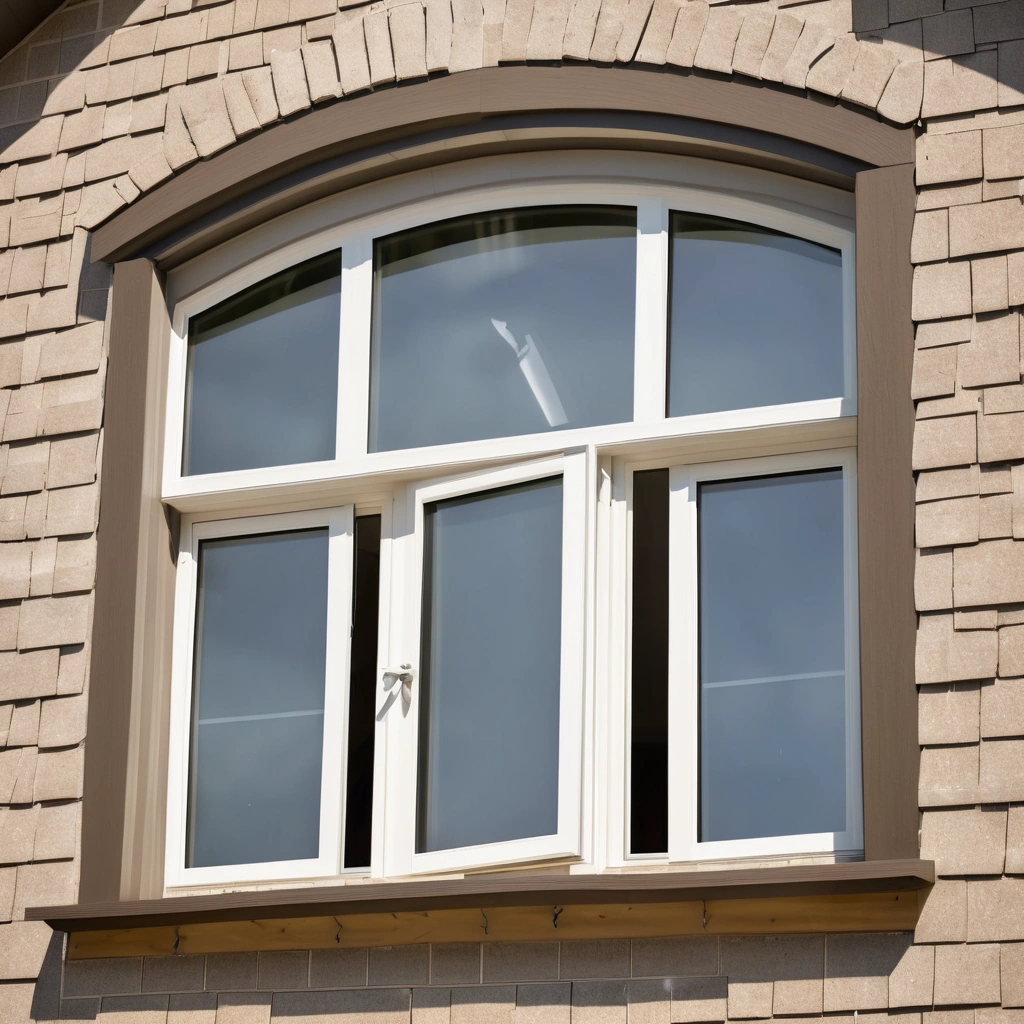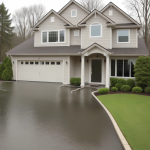Impact-Resistant Windows in Texas: A Cost-Effective Shield Against Storms?
Weathering the Storm: The Rising Need for Impact-Resistant Windows in Texas
The Texas sky, often a canvas of breathtaking sunsets, can quickly transform into a harbinger of severe weather. Hurricanes barreling in from the Gulf Coast, destructive hailstorms sweeping across the plains, and relentless thunderstorms spawning tornadoes pose a significant threat to homes across the state. For Texas homeowners, the question isn’t if a storm will hit, but when. In this environment, impact-resistant windows are emerging as a crucial line of defense, offering a robust shield against the elements.
But are they a cost-effective solution, or just an expensive upgrade? This comprehensive guide delves into the world of impact-resistant windows, analyzing their benefits, costs, and long-term value for Texas homeowners facing the realities of a changing climate and increasingly volatile weather patterns. We’ll explore how these windows can mitigate storm damage, reduce energy costs, enhance home security, and ultimately, provide peace of mind. This isn’t just about surviving the next storm; it’s about building a more resilient and valuable home for the future.
Beyond mere storm protection, impact-resistant windows offer a compelling combination of benefits that appeal to Texas homeowners. These windows significantly enhance home security, acting as a deterrent against intruders due to their robust construction and resistance to shattering. Furthermore, they contribute substantially to energy efficiency by minimizing heat transfer, keeping homes cooler in the sweltering Texas summers and warmer during the occasional winter chill. This translates to lower energy bills and a more comfortable living environment year-round.
For Texas homeowners considering window replacement, the potential for insurance discounts associated with installing hurricane windows that meet stringent Texas building codes adds another layer of financial incentive to consider. Understanding the true value of impact-resistant windows requires a thorough cost-benefit analysis tailored to the specific needs and location of Texas homeowners. While the initial investment is undoubtedly higher than that of standard windows, the long-term savings on energy bills, potential insurance discounts, and the avoidance of costly storm damage repairs can quickly offset the upfront expense.
Moreover, the enhanced home security and increased property value contribute to the overall return on investment. For those residing in hurricane-prone coastal regions or areas frequently impacted by severe thunderstorms and hailstorms, the peace of mind offered by impact-resistant windows is an invaluable asset. Consulting with local window installation experts can provide personalized assessments and accurate cost estimates, ensuring informed decision-making. Ultimately, the decision to invest in impact-resistant windows is a personal one, weighing the upfront costs against the potential long-term benefits and peace of mind. However, for Texas homeowners seeking to fortify their homes against the increasingly unpredictable weather patterns, enhance energy efficiency, improve home security, and potentially lower insurance premiums, impact-resistant windows represent a compelling and increasingly essential investment. As climate change continues to exacerbate severe weather events, the value proposition of these windows as a cost-effective shield against storms becomes ever more apparent.
Triple Threat: Storm Protection, Energy Efficiency, and Enhanced Security
Impact-resistant windows are engineered to withstand the force of flying debris and high winds during severe weather events. Unlike standard windows, they feature a layer of polyvinyl butyral (PVB) or SentryGlas interlayer sandwiched between two panes of glass. This interlayer acts as a shield, preventing the glass from shattering and creating a dangerous breach in the home’s envelope. For Texas homeowners, this means a significant reduction in the risk of water damage, structural compromise, and potential injury during hurricanes and severe thunderstorms.
The ability of impact-resistant windows to maintain the integrity of the building envelope is a critical factor in protecting families and property. Beyond storm protection, these windows offer a multitude of benefits tailored to the Texas climate. They significantly reduce energy costs by minimizing heat transfer during scorching summers and preventing heat loss during occasional cold snaps. The UV protection offered by the interlayer helps to prevent fading of furniture and flooring, preserving the value and appearance of interior furnishings.
Furthermore, impact-resistant windows act as a formidable barrier against intruders, enhancing home security. The laminated glass is much harder to break through than standard glass, deterring burglars and providing an added layer of safety for families. In the long term, these windows can increase a home’s resale value, making them a smart investment for the future. The enhanced energy efficiency of impact-resistant windows directly translates to lower utility bills for Texas homeowners. According to the U.S.
Department of Energy, inefficient windows can account for up to 25% of a home’s energy loss. By minimizing heat transfer, these windows help maintain a consistent indoor temperature, reducing the strain on HVAC systems and leading to substantial savings over time. Moreover, many insurance companies in Texas offer discounts to homeowners who install impact-resistant windows, further enhancing the cost-benefit analysis. These insurance discounts recognize the reduced risk of property damage associated with homes equipped with superior storm protection.
Moreover, the noise reduction benefits of impact-resistant windows contribute to a more comfortable and peaceful home environment. The laminated glass construction effectively dampens outside noise, creating a quieter indoor space. This is particularly valuable for homeowners living near busy streets, airports, or industrial areas. From an investment perspective, consider that window replacement with impact-resistant models is often viewed as a significant home improvement. This elevates the property’s appeal in the competitive Texas real estate market. By offering a combination of storm protection, energy efficiency, enhanced security, and noise reduction, impact-resistant windows represent a holistic upgrade for Texas homes.
Decoding the Options: Glass Types, Framing Materials, and Aesthetic Considerations
The market presents Texas homeowners with a diverse array of impact-resistant windows, each characterized by unique features and price points. Selecting the right window involves carefully evaluating glass types and framing materials, as these factors significantly influence both performance and aesthetic appeal. Understanding these nuances is crucial for making an informed decision that balances storm protection, energy efficiency, and home security. Furthermore, proper storm window installation is paramount to ensure the windows perform as intended during severe weather events, and adherence to Texas building codes is essential for safety and compliance.
Glass selection is a pivotal decision. Laminated glass with a polyvinyl butyral (PVB) interlayer is a frequently chosen, cost-effective option, offering a reliable defense against flying debris. For enhanced strength and optical clarity, SentryGlas is available, albeit at a premium price point. Many impact-resistant windows also incorporate Low-E coatings to bolster energy efficiency by reflecting infrared and ultraviolet (UV) light. Texas homeowners should carefully assess their specific UV protection needs based on window orientation and sun exposure, as this can significantly impact cooling costs and interior fading.
Considering these factors is essential when conducting a cost-benefit analysis for window replacement. Framing materials also play a critical role in the overall performance and aesthetics of impact-resistant windows. Vinyl frames are a popular choice due to their affordability, minimal maintenance requirements, and inherent energy efficiency. Aluminum frames provide exceptional strength and durability, making them suitable for hurricane windows, but they are less thermally efficient than other options. Composite frames offer a compelling blend of strength, energy efficiency, and aesthetic versatility.
Wood frames, while offering a classic and elegant look, demand more maintenance and are susceptible to moisture damage, making them a less ideal choice for some Texas climates. The framing material impacts not only the window’s structural integrity but also its ability to contribute to energy savings and potentially qualify homeowners for insurance discounts. Beyond protection and efficiency, consider noise reduction and aesthetic harmony. Impact-resistant windows excel at dampening external noise, creating a more tranquil and comfortable indoor environment.
This is particularly beneficial for homes located near busy streets or airports. Aesthetically, choose windows that complement the home’s architectural style and enhance its curb appeal. Factors such as frame color, grid patterns, and window style (e.g., single-hung, double-hung, casement) should be carefully considered to ensure a cohesive and visually pleasing result. Ultimately, the selection of impact-resistant windows should be a well-informed decision that aligns with the homeowner’s specific needs, budget, and aesthetic preferences, maximizing the return on investment and providing long-term peace of mind.
The Bottom Line: A Cost-Benefit Analysis for Texas Homeowners
The decision to invest in impact-resistant windows necessitates a rigorous cost-benefit analysis for Texas homeowners. While the upfront expenditure is undeniably higher than standard window replacement, the long-term financial and security advantages can be considerable. It’s crucial to view this not merely as an expense, but as a strategic investment in your property’s resilience and value. Initial Investment: The price of impact-resistant windows varies significantly based on factors like size, glass type (laminated vs. SentryGlas), frame material (vinyl, aluminum, wood), and, critically, the complexity of the storm window installation.
Obtain detailed, itemized quotes from at least three reputable contractors experienced with Texas building codes. Don’t solely focus on the lowest bid; prioritize contractors with strong reputations, proper licensing, and proven expertise in installing hurricane windows to ensure optimal performance and warranty coverage. A poorly installed impact-resistant window offers little storm protection. Insurance Premiums: A significant financial incentive often overlooked is the potential for substantial insurance discounts. Many insurance providers in Texas recognize the enhanced storm protection offered by impact-resistant windows and offer reduced premiums.
These insurance discounts can offset a considerable portion of the initial investment over time. The specific discount percentage hinges on factors such as the level of protection provided and the insurance company’s policies. Contact your agent to understand the potential savings and ensure your windows meet the criteria for these discounts. Failure to properly document the installation can negate any potential savings. Energy Savings: Beyond storm protection, impact-resistant windows contribute significantly to energy efficiency. Their multi-layered construction minimizes heat transfer, keeping your home cooler in the scorching Texas summers and warmer during occasional cold snaps.
This translates to lower energy bills year-round. Opting for Energy Star-certified impact-resistant windows maximizes these energy savings, further enhancing the return on investment. According to the U.S. Department of Energy, energy-efficient windows can reduce energy bills by up to 15%. Repair Costs and Home Security: The primary advantage of impact-resistant windows lies in their ability to withstand severe weather, precluding costly repairs and replacements after storms. This preventative measure can save Texas homeowners thousands of dollars over the lifespan of the windows, especially in hurricane-prone coastal regions or areas susceptible to hailstorms.
Moreover, impact-resistant windows bolster home security, making it harder for intruders to break in. This added layer of protection provides peace of mind and may even qualify you for additional home security-related insurance discounts. Long-Term Value and Regional Considerations: Homes equipped with impact-resistant windows are more appealing to potential buyers, often commanding higher resale values. This makes them a sound investment for the future. “In coastal areas particularly, impact-resistant windows are becoming a standard expectation among homebuyers,” notes Sarah Jones, a real estate agent specializing in coastal properties. “They view it as a critical safety feature and are willing to pay a premium for it.” Furthermore, consider your specific geographic location within Texas. While coastal regions face hurricane threats, inland areas grapple with severe thunderstorms and hailstorms. Regardless of your location, impact-resistant windows offer a robust shield against the elements, contributing to long-term cost savings and enhanced home value.
Clearing the Air: Addressing Misconceptions and Making Informed Decisions
Despite their proven benefits, several misconceptions surround impact-resistant windows. One common myth is that they are only necessary for coastal areas. However, hailstorms and severe thunderstorms can cause significant damage inland, making impact-resistant windows a valuable investment for homeowners across Texas. Another misconception is that they are unattractive. Modern impact-resistant windows come in a variety of styles and designs to complement any home’s aesthetic. Before making a decision, research local Texas building codes and insurance requirements related to storm protection.
Some municipalities may offer incentives or rebates for installing impact-resistant windows. Obtain quotes from multiple reputable contractors and carefully review their credentials and experience. Choose windows that meet or exceed industry standards for impact resistance and energy efficiency. Consider the long-term value and peace of mind that impact-resistant windows provide. By making an informed decision, Texas homeowners can protect their homes, families, and investments from the unpredictable forces of nature. As we look towards the next decade (2030-2039), with projections indicating potentially more frequent and intense weather events, the investment in impact-resistant windows becomes not just a smart choice, but a necessary one for safeguarding homes and ensuring long-term financial security.
Beyond just storm protection, the energy efficiency benefits of impact-resistant windows often go unmentioned. These windows are designed with multiple layers and specialized coatings that significantly reduce heat transfer, keeping homes cooler in the sweltering Texas summers and warmer during the brief winter months. This translates directly into lower energy bills, providing a tangible return on investment for Texas homeowners. Furthermore, many insurance companies offer substantial insurance discounts for homes equipped with impact-resistant windows, further sweetening the cost-benefit analysis.
When considering window replacement, remember to factor in these long-term savings, as they can significantly offset the initial investment. Texas building codes also play a crucial role in determining the appropriate level of storm protection for different regions. While coastal areas are often subject to stringent hurricane window requirements, even inland areas may have specific regulations regarding impact resistance, particularly in regions prone to hailstorms. Understanding these codes is paramount for ensuring compliance and maximizing home security.
Moreover, investing in impact-resistant windows enhances home security by making forced entry significantly more difficult. The robust construction and shatter-resistant glass act as a deterrent to potential intruders, providing an added layer of protection for families and valuables. This dual benefit of storm protection and enhanced home security makes impact-resistant windows a compelling option for discerning homeowners. Ultimately, the decision to invest in impact-resistant windows is a personal one that requires careful consideration of individual needs and circumstances.
However, by dispelling common misconceptions, understanding the long-term benefits, and factoring in potential insurance discounts and energy savings, Texas homeowners can make an informed decision that protects their homes, families, and financial well-being. Before committing, conduct a thorough cost-benefit analysis, comparing the upfront investment against the potential savings and the invaluable peace of mind that comes with knowing your home is well-protected against the unpredictable forces of nature. Prioritize reputable contractors with proven experience in storm window installation and a commitment to adhering to all relevant Texas building codes.


